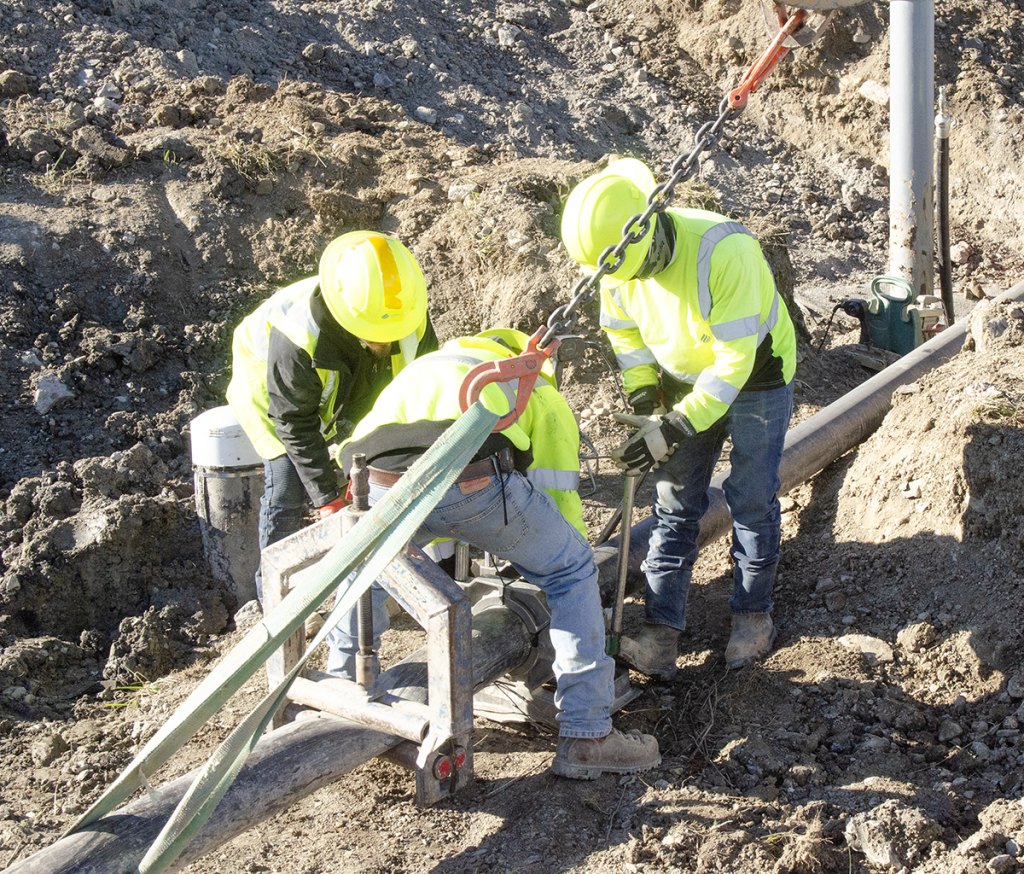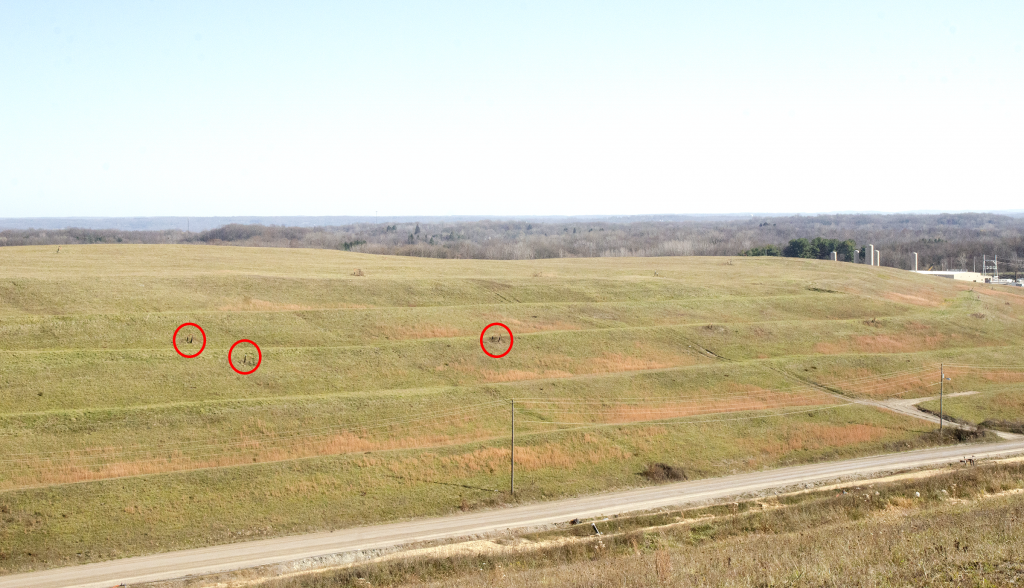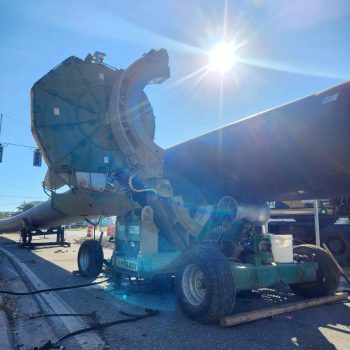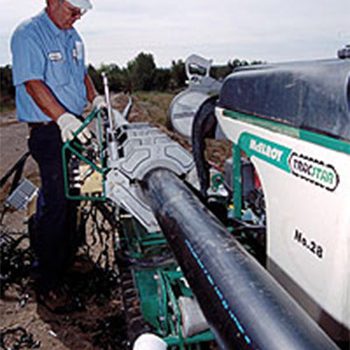In November 2022, fusion technicians were working to complete the latest vent release pipes at a landfill near Lowellville, Ohio, about 80 miles (130 km) from Cleveland.

Using a DynaMc® 28 Hand Pump, a Pit Bull® 14, Pit Bull 26, and Rolling 28, along with a TracStar® 618, crews fused HDPE pipe vents that will join hundreds of others dotting the landscape of the landfill.
According to the U.S. Environmental Protection Agency (EPA), methane makes up about 50% of landfill gas, which is a natural byproduct of the decomposing organic material. Installing vents keeps the methane and other gases from building up underground, reducing the risk of accidents on site.

But, in a process growing in popularity worldwide, the methane has another potential use as a renewable energy resource.
Rather than simply allowing it to be vented into the atmosphere, landfill gas can be collected and its methane used to generate electricity or as a medium- or high-BTU fuel.
To be converted into energy, the landfill gas undergoes a series of treatments, including moisture removal, sulfur removal, and compression.
Installing vents at the landfill is part of the process of capturing the escaping methane so it can be converted. They aren’t all installed at once – more vents are brought online as needed, which was the case during this latest round of work.
Morain Sales and Service, a Youngstown, Ohio-based equipment company, provided the fusion equipment for this and other phases of the project.
“Each vent takes about two or three hours to install,” said Pat Sims, Morain’s Outside Sales Representative. “But that time can vary, depending on how long it takes for excavation.”
During a stretch of unseasonably mild temperatures, crews worked to expose existing pipeline and temporarily cinch it closed, allowing them to cut a segment out of the line and install a T-shaped branch with a vent attached to the vertical end. Using a Pit Bull and the DynaMc Hand Pump, the crews quickly butt fused the existing line to the new T-branch and removed the cinching device, resuming service to the entire line.
“One crew can do two or three of those vents in a day,” Sims said.
The DynaMc line of McElroy machinery incorporates the features of McElroy equipment into smaller units for tight working environments. In this case, a DynaMc Hand Pump was used, allowing operators manual control over the fusion pressure applied.
Pit Bulls were built for in-ditch work, with a reputation for endurance and plenty of muscle. These rugged machines are instrumental for operations that call for flexibility in close quarters.
Carbon Limestone Landfill is a member of Republic Services, a company that specializes in disposal facilities. For this project, HDPE was chosen because of its ability to withstand the rugged conditions of the landfill industry.
“If you tried to add a vent to a PVC line, it would shatter when pressure was applied to it to temporarily cinch it off,” Sims said. “And it wouldn’t only shatter where the pressure was applied – it would split all the way down the line.”
For iron or steel pipe, the hills and valleys that make up landfills would have made installing the pipe extremely difficult, if not impossible.
“HDPE was the clear choice in this case,” Sims said. “And that becomes even more obvious when you see how many industries are adopting it, and the various creative ways it’s being used.”

